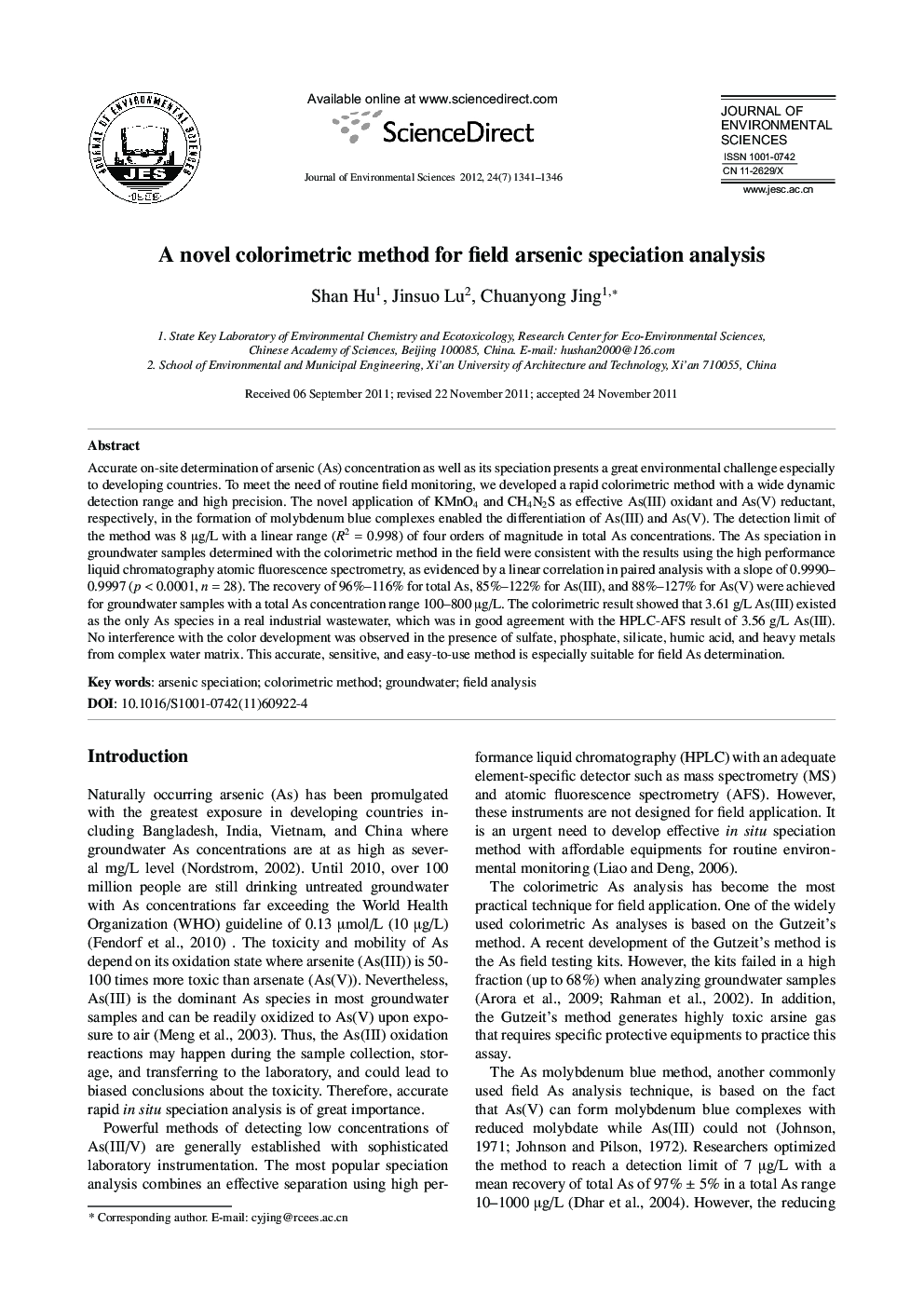| کد مقاله | کد نشریه | سال انتشار | مقاله انگلیسی | نسخه تمام متن |
|---|---|---|---|---|
| 4455328 | 1312513 | 2012 | 6 صفحه PDF | دانلود رایگان |

Accurate on-site determination of arsenic (As) concentration as well as its speciation presents a great environmental challenge especially to developing countries. To meet the need of routine field monitoring, we developed a rapid colorimetric method with a wide dynamic detection range and high precision. The novel application of KMnO4 and CH4N2S as effective As(III) oxidant and As(V) reductant, respectively, in the formation of molybdenum blue complexes enabled the differentiation of As(III) and As(V). The detection limit of the method was 8 μg/L with a linear range (R2 = 0.998) of four orders of magnitude in total As concentrations. The As speciation in groundwater samples determined with the colorimetric method in the field were consistent with the results using the high performance liquid chromatography atomic fluorescence spectrometry, as evidenced by a linear correlation in paired analysis with a slope of 0.9990-0.9997 (p < 0.0001, n = 28). The recovery of 96%–116% for total As, 85%–122% for As(III), and 88%–127% for As(V) were achieved for groundwater samples with a total As concentration range 100–800 μg/L. The colorimetric result showed that 3.61 g/L As(III) existed as the only As species in a real industrial wastewater, which was in good agreement with the HPLC-AFS result of 3.56 g/L As(III). No interference with the color development was observed in the presence of sulfate, phosphate, silicate, humic acid, and heavy metals from complex water matrix. This accurate, sensitive, and easy-to-use method is especially suitable for field As determination.
Journal: Journal of Environmental Sciences - Volume 24, Issue 7, July 2012, Pages 1341-1346